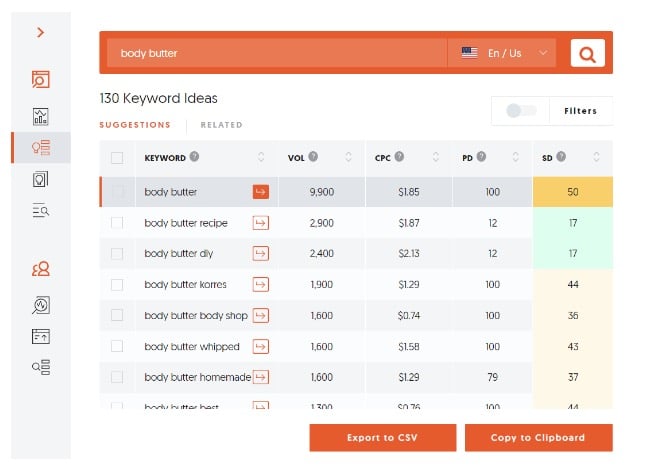It’s been weeks, if not months since you launched your e-commerce website. And, despite burning through guides on how to build a professional-looking online store, you’re still not getting the results you want.
Sure, there may be a plethora of e-commerce tools out there to build an e-commerce website, but what you can’t acquire overnight is the knowledge of how to properly run and grow your business. While there are several tried and tested resources on the web about how to improve, when it comes down to the nitty-gritty of it, you still need to put in your due diligence in order to succeed.
Here, we’ll go over some of the fundamental conversion rate optimization (or CRO) strategies that can turn your visitors into paying customers.
Double-down on content creation
If you want a steady stream of prospective customers, you need to double down on your startup’s content creation and develop an airtight content marketing strategy.
Remember, 92 percent of website visitors won’t be ready to make a purchase on their first visit. Most of them are merely doing research, comparing products or trying to learn more about a company.
Rather than churning out product offers, you’re much better off publishing content that provides value to your readers. Doing so will help establish your company as a thought leader and problem-solver, making your brand the go-to site for your readers when they do need to purchase something.
While doubling down on your content creation efforts can prove to be costly for you, it’s worth pointing out that there are several tried and tested website monetization strategies you can use to supplement your site’s earnings so it can fund itself.
That being said, you have all the more reason to ramp up your content production efforts so you can have better brand visibility, build your brand’s reputation and win your audience’s trust.
Related: 3 Ways to Sell More of Your Products and Services With the Traffic You Already Have
Finding content topic ideas with keyword research
The key to developing an effective content marketing strategy is to identify topics your target customers want to read about.
Using a keyword research tool to understand what they search for online is a step in the right direction. With Ubersuggest, you can easily unearth a pool of keyword ideas that can be used as content topics.
Let’s pretend we’re a company that creates and sells homemade body butter.

With a little creativity, you can refine the keywords above into the following content topics:
- How to Make the Most Out of These Body Butter Recipe Ideas
- X Body Butter DIY Tips You Can’t Afford to Miss
Keep page load time below 3 seconds
You probably dislike waiting for information on a website to load, and the same can be said for your potential customers.
According to research, around 40 percent of online users won’t hesitate to abandon a site that takes over three seconds to load. In other words, nearly half of your potential customers may be gone before you even get the chance to present your products or services.
To make sure your website is up to par, you can start with a tool like Google’s Page Speed Insights to analyze page speed, and the tool will provide you with optimizations you can perform to increase your ranking. Simply enter your website’s URL and click “Analyze” to have the tool detect performance-related issues along with the appropriate fixes.
Design a lead generation strategy
Once your website gains traction and starts getting traffic, the next step is to launch a lead generation strategy that can turn visitors into loyal followers and email subscribers. This will allow you to forge a connection with site visitors who may not be ripe for a purchase just yet (but might be eventually).
A landing page is usually the centerpiece of any lead generation strategy for e-commerce websites. This page allows you to present your value propositions to incoming traffic and show them the next step with opt-in forms.
Most modern content management systems and e-commerce website builders have support for add-ons that make landing page design easy. To streamline your lead generation and nurturing efforts, you can also use the built-in landing page builders of email marketing platforms like MailChimp.
Another noteworthy feature of MailChimp is the automation workflow builder. This allows you to automate emails that trigger during specific events, such as new purchases, shopping cart abandonment and even birthdays.
Sign Up: Receive the StartupNation newsletter!
Improve your security
Finally, the security of your e-commerce startup is something you should never overlook. Consumers are growing ever more conscious of the cybersecurity risks of online transactions. As such, fundamental cybersecurity measures (like having a valid SSL certificate) could have a positive impact on buyer confidence.
Of course, website security also affects performance and may result in crashes or downtimes, which (in turn) make you miss out on profits. Additionally, keep your website platform up to date and be sure to use a web application firewall to keep malicious traffic off of your website.
Conclusion
Starting up an e-commerce business can be tough, but there’s nothing you can’t accomplish with the right tools and knowledge.
When executed correctly, the strategies above are guaranteed to help you sell products on your online store. Just remember, the magic won’t happen overnight. Be patient and learn to measure your results. If you can embrace these tactics, your startup should be up and running (and bringing in sales!) in no time.






